|
The Early Days
Daisy Alcock’s story starts at Hillocks
farm in the little village of Stanton, Ashbourne,
Derbyshire. Stanton is a typical small Derbyshire hamlet
that is listed in the Domesday Book. The name means ‘Stone
Farmstead’ which could refer to its building material
(sandstone). In 1851 the population was listed as 395. In
2001 the population had fallen to 232.
|
The 1899 parish records for Stanton
Primitive Methodist Chapel, lists Hillock farm and its
occupants as follows: -
| |
|
|
|
| Name |
Age |
Relationship |
Occupation |
| James Alcock
|
60 |
Head
of household |
Farmer |
| Ralph Alcock
|
31 |
Son |
Farmer |
| Fannie Alcock |
25 |
Daughter-in-law |
|
| Elizabeth Alcock |
1 |
Granddaughter |
|
| Annie
Ratcliff |
17 |
|
Domestic Servant |
| |
|
|
|
|
|
| Ralph and Fannie were Daisy’s parents, living with their
father, James Alcock who owned the farm. Daisy was born on
9th March, 1901. The first mention we find of Daisy is in
the 1911 census when she was living at Anson House Boarding
School, Rugeley, which was owned by Arthur Harry Pratt. |
|
The occupants of Anson House were as
follows:
| Name |
Age |
Relationship |
Occupation |
|
Arthur Harry Pratt |
68 |
Head
of household |
Retired Bank
Manager |
|
Jessie Pratt |
47 |
Wife |
|
|
Dorothy Mary Pratt |
28 |
Daughter |
Trained Nurse |
|
Marjorie Pratt |
7 |
Daughter |
Scholar |
|
Christine Mary Pratt |
16 |
Daughter |
Scholar |
| Daisy Alcock |
10 |
Boarder |
Scholar |
| Isobel Alcock |
12 |
Boarder |
Scholar |
| Millicent Eclair |
14 |
Servant |
Domestic Servant |
| |
|
|
|
|
|
| The 1911 census also records that Ralph and Fannie had
moved to Wednesfield and were living at 98 Neachells
Lane, which is now the site of Wednesfield Conservative
Club. |
The occupants of 98 Neachells Lane were as
follows:
| |
|
|
|
| Name |
Age |
Relationship |
Occupation |
| Ralph Alcock |
42 |
Head
of household |
Farmer |
| Fannie Alcock |
34 |
Wife |
|
| Percy Alcock |
5 |
Son |
|
| |
|
|
|
|
|
| When Daisy came home she attended
Wolverhampton Girls’ High School. Her art training began at
Wolverhampton Municipal School of Art and Crafts, where she
received a class prize for still life painting. |
|

From the 1919/20 programme of Art
School prize winners. |
|
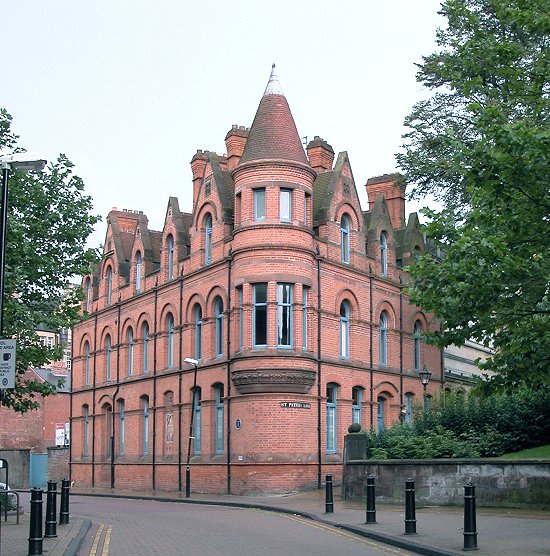
The Wolverhampton Municipal School of
Art and Crafts building seen from Wulfruna Street. |
Parish records for Wednesfield show
that Ralph Alcock and his family still lived at 98 Neachells
Lane in 1914, but sometime later Ralph acquired New Cross
Farm and his family moved there.
Daisy spent a lot of her spare time
working on her father's farm, which was really a small
holding. Firstly, in Neachells Lane and later at New Cross
Farm, but her real love was Art.
Daisy’s father Ralph was a
master carpenter, who could also design and build beautiful
furniture and she inherited his artistic flair. |
|
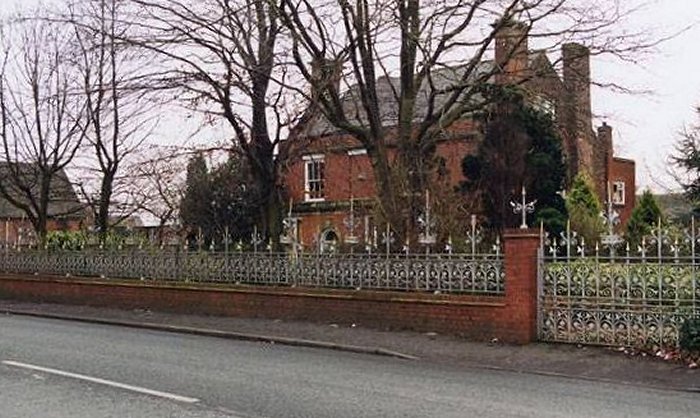
New Cross Farm in later years. |
|
Daisy became interested in calligraphy,
which is not surprising when you see the beauty and style of
this form of writing with its embellishments, which is at
least 2,000 years old. She knew that she would have to move
to London if she was to achieve her ambition of becoming a
great calligrapher. Daisy moved to Kensington and enrolled
in the Royal College of Art in the 1920's, where she became
a pupil of Edward Johnston, the father of modern
calligraphy. Edward Johnston was a master Calligrapher who
by meticulous research laid down the principles of design
for modern calligraphy.
|
| Daisy qualified as a teacher and
lectured in lettering, illumination and bookbinding at the
Hammersmith School of Building & Arts and Crafts between
1928 and 1950. She gained an Art Teacher's Diploma and was a
Nationally Registered Designer. She also became an Associate of
the Royal College of Art in London and a Fellow of the Royal
Society of Arts.
As well as teaching at Hammersmith
School of Building & Arts and Crafts, Daisy also worked
tirelessly into the night to complete various commissions
from her Kensington Studio.
She would journey back to
Wednesfield as often as possible to see her family and
tried to get back home every 2 or 3 weeks. |
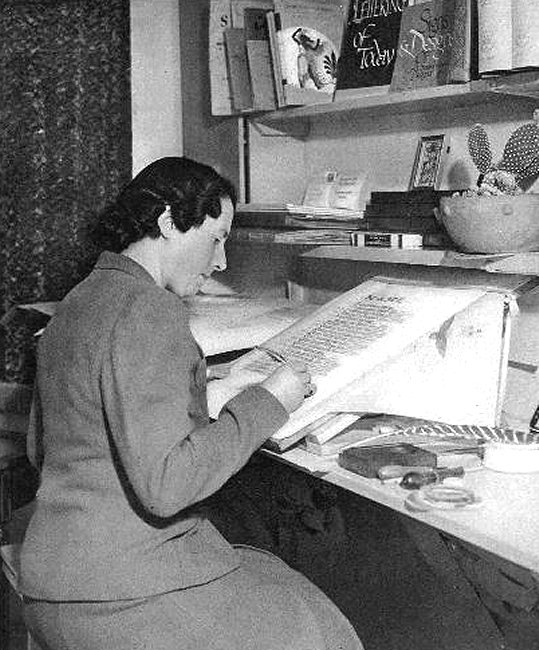
Daisy at work. |
|
Her friend and fellow associate of the
Royal College of Art, William Washington, a master engraver,
painter, silversmith and calligrapher, was Head of The
School of Art between 1930 and 1950. He was also Principal
of Hammersmith School of Art and Building. During Daisy's
time there he wrote the following in the October 1945
edition of ‘The Studio’ magazine:
| "As a scribe Miss Alcock is a craftsman
of the highest order. Her work, though based on a
traditional style, has a liveliness and originality which
makes it very striking and attractive." |
Just after the outbreak of war in 1939,
Daisy was told that the Hammersmith School, along with other
schools was to be closed down. Her classes were disbanded
and her pupils scattered, her services were no longer
required. Daisy was dismayed.
Despite her diminutive size, Daisy set
about persuading a cabinet minister and the Under Secretary
for Education to reconsider the decision,
saying that Hitler had won if we allowed him to affect our
private lives in this way. The ministerial machine was set
in motion and it was not long before the school reopened.
Daisy had a studio in Kensington, at 27
Kensington High Street where she often worked into the
early hours of the morning on numerous commissions.
New Cross Farm
The farmhouse, originally known as Newhall
Buildings, was built in the mid 18th century along with two
‘L’ shaped barns, on a site that is between the Wyrley &
Essington Canal and Wolverhampton Road. One of the barns had
a stable, the other was used as a cow shed. The house was
remodelled in the mid 19th Century and extended in the 20th
Century.
Daisy’s father Ralph acquired the
farmhouse and ran the farm. After his death in 1947, his
wife Fannie lived in the house until her death in 1966. When
she died, Daisy returned to
New Cross Farm and took-up residence. For a time Daisy continued to
teach calligraphy in the local area.
|
|
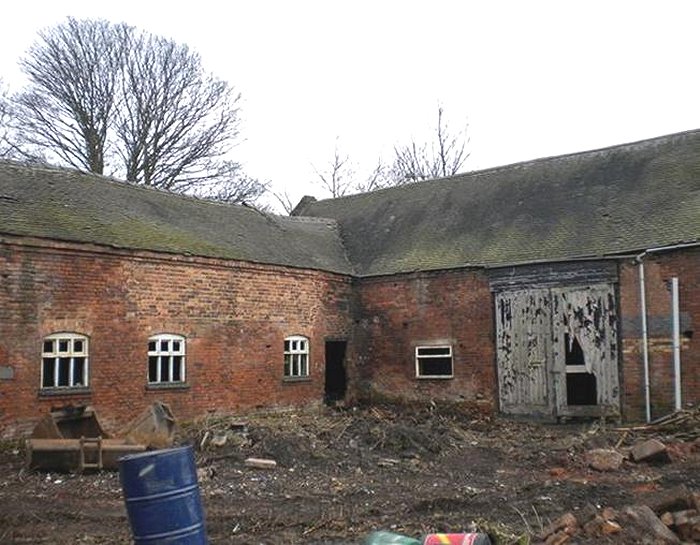
One of the barns at New Cross
Farm. |
|
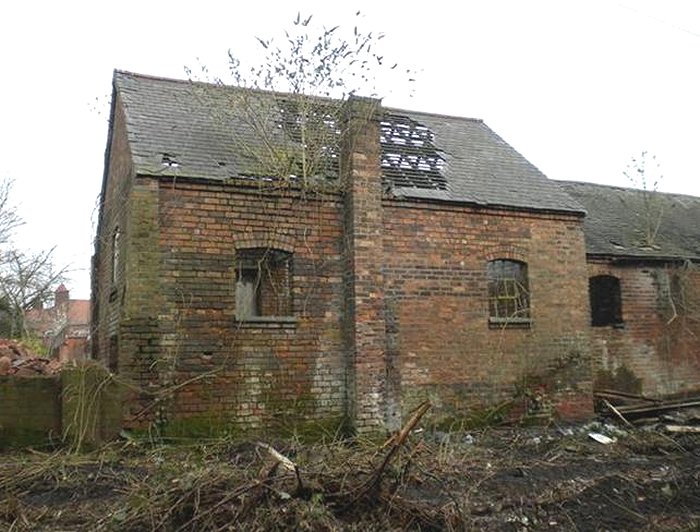
Another view of the barns at New
Cross Farm. |
|
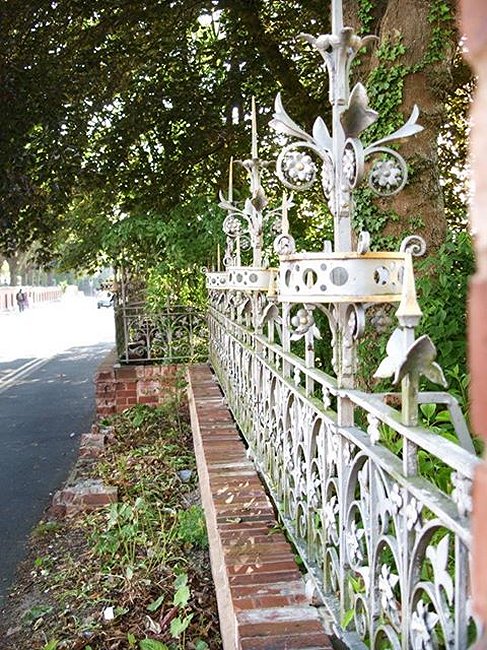
The ornate railings at New Cross Farm. |
The ornate railings along the front of
New Cross Farm may have been designed by Daisy, but it is
suggested that they could have come from Stanmore Hall near
Bridgnorth, which was demolished in 1938.
Daisy died on 5th May, 1996 at the age
of 95. After her death the house
fell into a bad state of repair.
In March 1998 consent was
given to extend the house and convert it into a public house
and restaurant, but nothing was done. In 2001 plans were
made to convert the house into a children’s home, providing 24 hour
care, but again nothing happened.
By 2008 the house was in a
terrible state, and within a few years was demolished. The
site has now become a car park. |
|
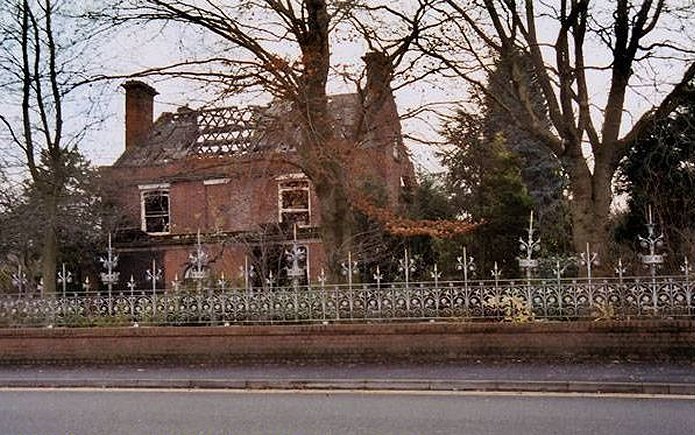
New Cross Farm at the end of its
life. |
|

The family grave in Heath Town
graveyard. |
 |
|
 |
Return to the
previous page |
|
Proceed to
Obituary |
|